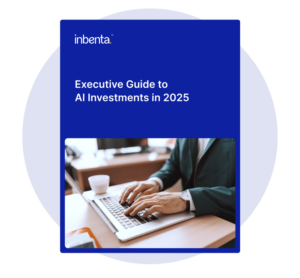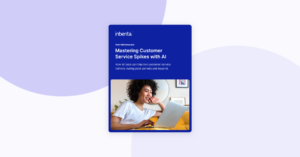DALLAS, TX – May 22, 2025 – Inbenta, a global innovator in AI-powered solutions for customer and employee experiences, is proud to announce the addition of Christopher Hieb to its team as Strategic Advisor.
With an extensive background in software technology investment banking and expertise in Conversational AI, Customer Interaction Management (CIM), and analytics, Hieb brings invaluable insights to help drive Inbenta’s continued growth.
“Christopher’s wealth of experience and deep understanding of AI-driven technologies make him an exceptional addition to our advisory team,” said Melissa Solis, CEO of Inbenta. “His strategic vision and ability to anticipate shifts in the market will be instrumental as we refine our solutions and broaden our reach globally.”
Hieb has built a remarkable career in financial services, advising technology-focused clients and guiding investments in AI and CX solutions. He has held senior roles at renowned firms such as DC Advisory, Signal Hill Capital, and Macquarie Group. As a Managing Director, he specialized in software and services, focusing on driving growth in CIM, CXaaS, analytics, and AI-powered applications.
In addition to his professional achievements, Hieb is an accomplished author, with two published books — CIM Investment Thesis Insights I and II. These works delve into the evolving landscape of AI-enriched customer interaction solutions and serve as valuable resources for leaders navigating this rapidly advancing field.
“I’m honored to partner with Inbenta as a Strategic Advisor,” Hieb stated. “AI-powered technologies are transforming business interactions, and Inbenta’s innovative solutions are uniquely positioned to address the growing complexity of customer and employee experiences. I look forward to collaborating with the talented team at Inbenta as they continue to deliver world-class tools for automation and personalization.”
Hieb’s appointment coincides with Inbenta’s sustained momentum in the AI solutions space. As businesses increasingly adopt Conversational AI to streamline operations and enhance user experiences, Hieb’s perspective will assist in shaping Inbenta’s strategic growth initiatives in key areas.
About Inbenta
Inbenta is a global leader in AI-powered experience solutions, helping organizations automate interactions, reduce operational costs, and enhance satisfaction across all communication channels. Its state-of-the-art Conversational AI platform helps businesses deliver consistent, personalized, and efficient customer and employee experiences. Trusted by leading brands worldwide, Inbenta is committed to innovation and excellence in everything it does.
Want to see Inbenta in action? Book a demo.







